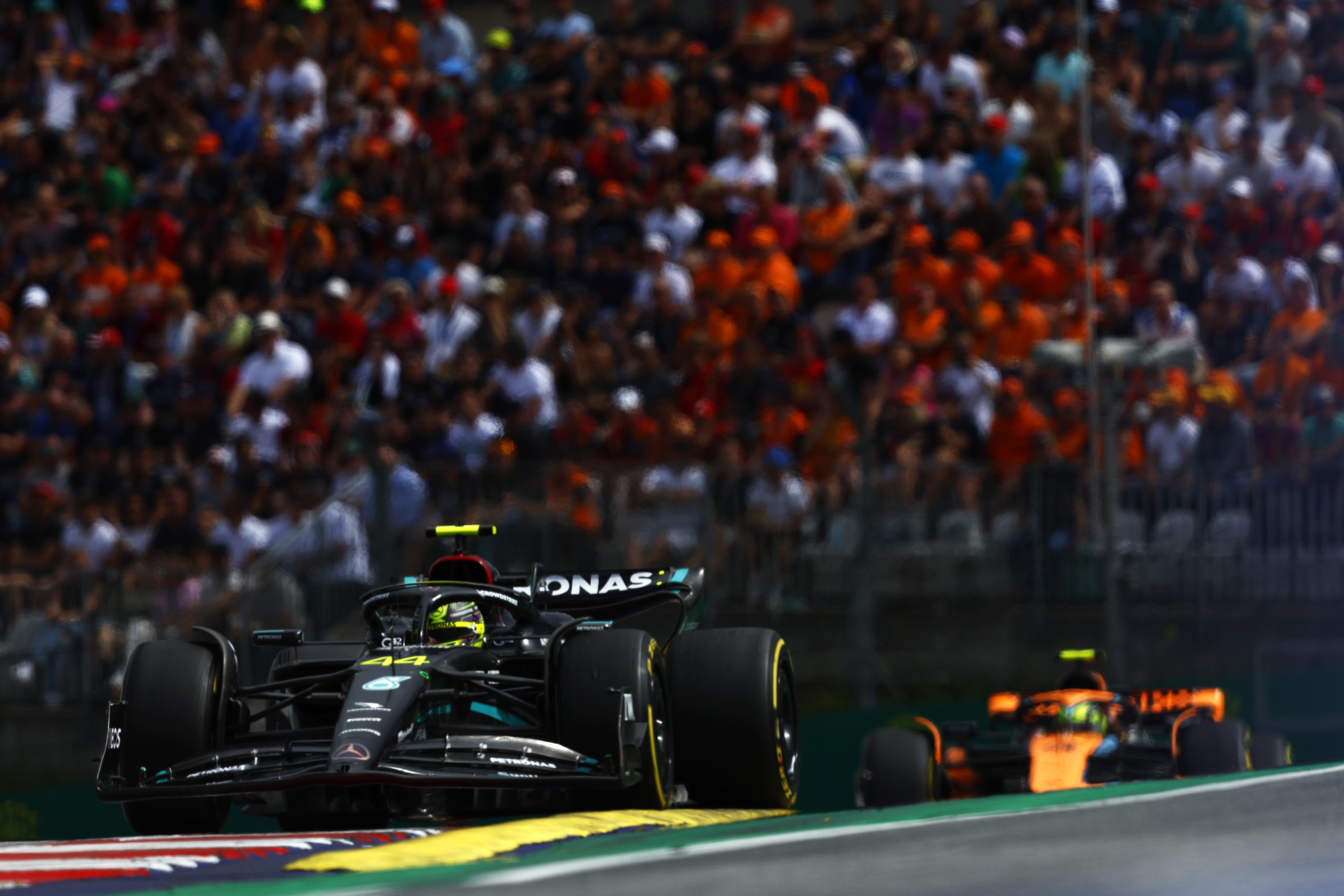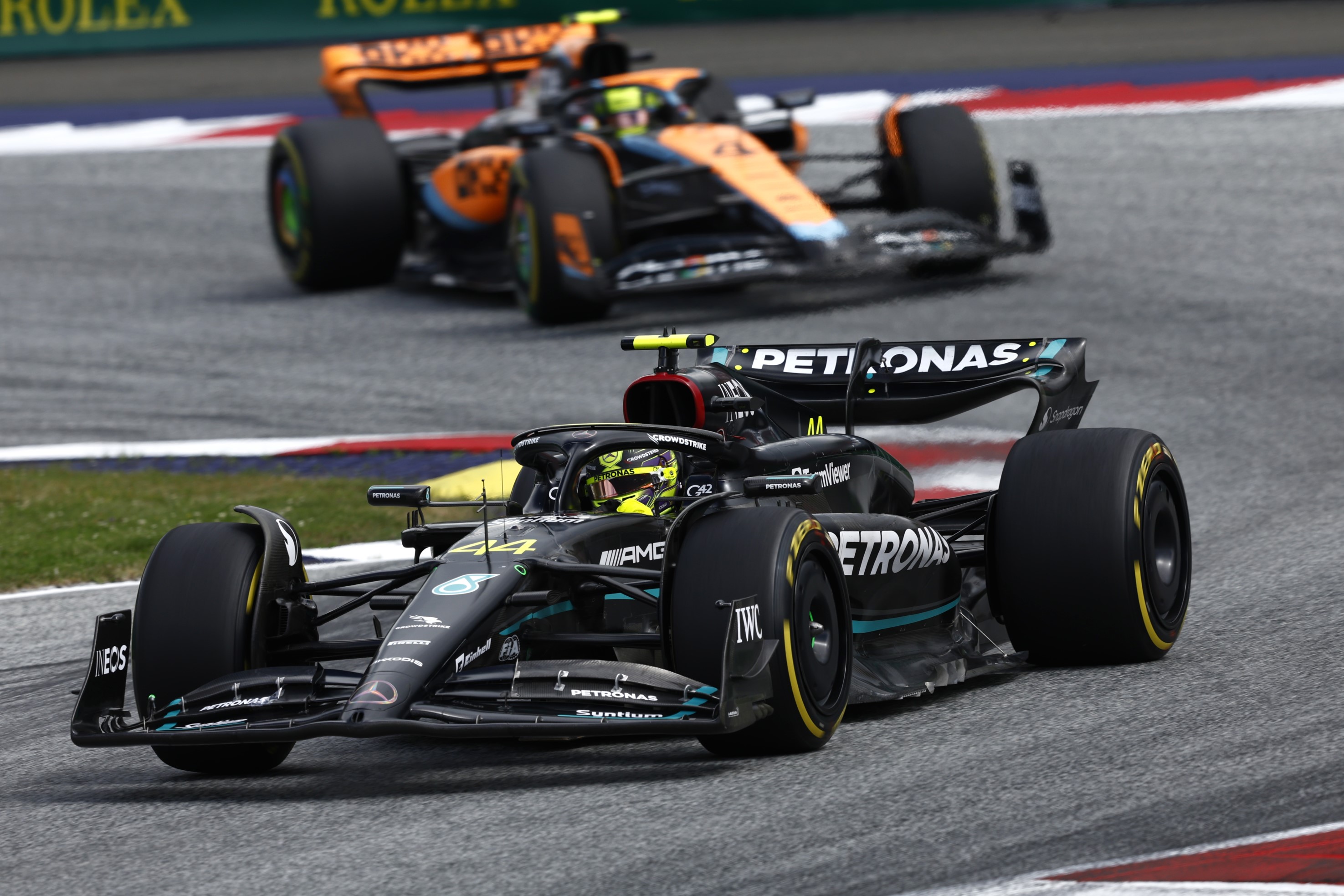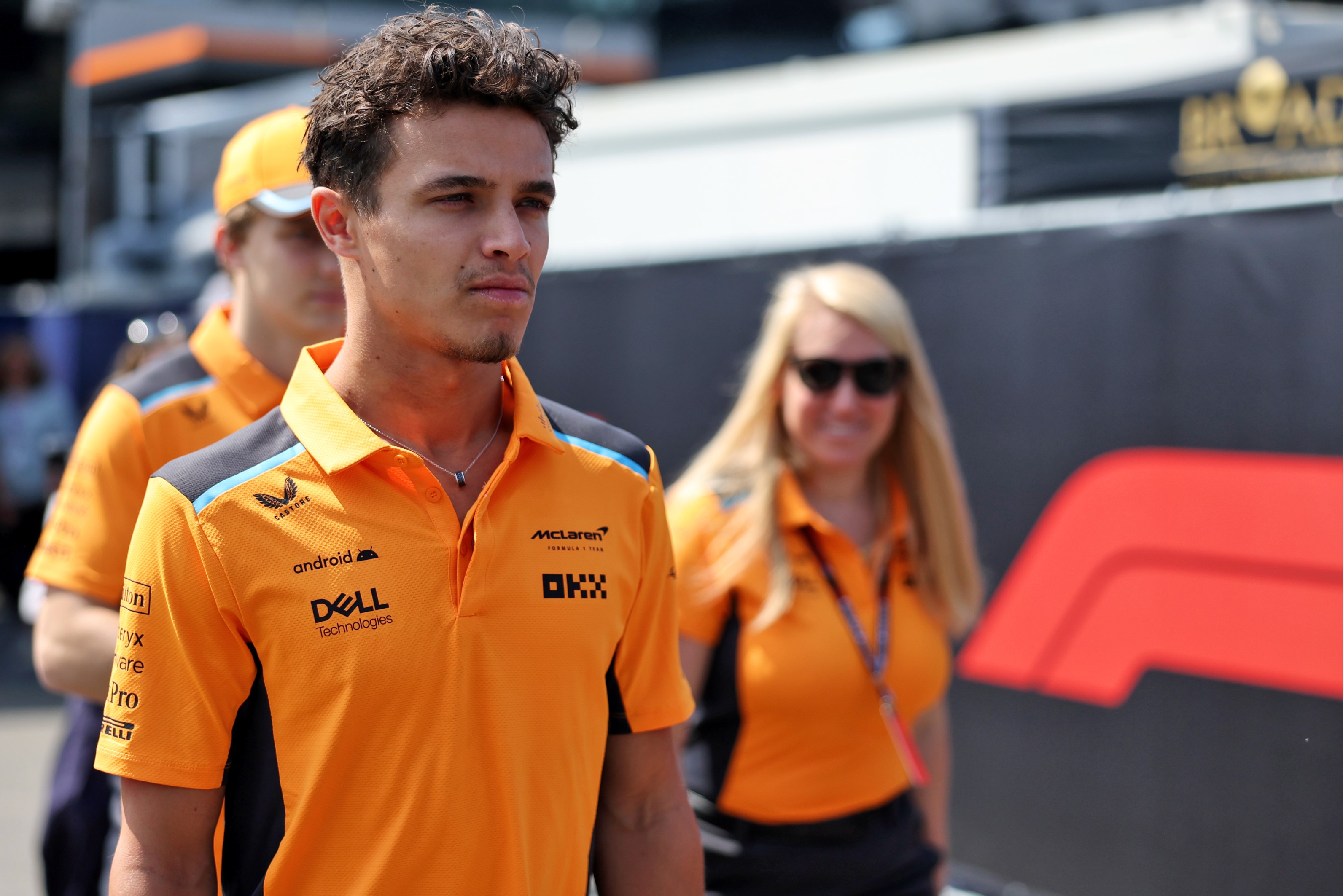Up Next

The inevitable broadcast of a driver’s team radio message reporting a rival’s perceived track limits offence has become a gloriously petty yet understandable fixture of modern Formula 1.
Lewis Hamilton, on the receiving end of such snitching in the Austrian Grand Prix then dishing out his own in response, lamented this after Sunday’s race, twice stating it is “not racing”.
Hamilton was one of seven drivers to get a time penalty for repeat track limits offences during the grand prix, then one of eight to receive one post-race after a bizarre batch of additional penalties.
The FIA’s attention to detail on this means Hamilton probably would have been penalised anyway, but the driver pursuing him in the first stint – Lando Norris – did not leave anything to chance.

From the early safety car restart to the moment they dived into the pits together under a virtual safety car later on, Norris messaged his team on nine different occasions to report Hamilton’s driving – eight of them being unprompted.
NORRIS’S REPORTS
At the restart, exiting Turn 10: “Track limits, Hamilton, last corner.”
And on the next lap in the same place: “Track limits again, Hamilton, last corner.”
Two laps later, exiting Turn 6: “Track limits again, Hamilton. That’s his third time.”
After a few laps, back to Turn 10: “Track limits again, that’s his fourth strike.”
And immediately afterwards: “Ha – Turn 1, again.”
Norris was later told to report it “every time Hamilton goes off”. In response, he said: “I mean, he’s going off every lap everywhere. I’m not going to talk the whole time.”
After another message claiming Hamilton went “completely off, Turn 1”, Norris was actually told: “OK, you can stop reporting him now, they’re looking at every single one.”
But Norris didn’t. A little while later at Turn 6, he said: “Track limits again.” And he was reminded: “It’s OK, they’re getting through them now, there’s no need to report them. He’s already had a black and white flag.”

Hamilton’s subsequent five-second penalty then clearly got under the Mercedes driver’s skin, possibly more than usual because it was turning into a difficult grand prix. And it prompted him to turn the spotlight on his fellow competitors.
After becoming aggrieved with his penalty, Hamilton issued a burst of six reports of his own in the second stint – with Red Bull’s Sergio Perez the main target.
HAMILTON’S REPORTS
“Car ahead [Perez] just went off Turn 10.”
“Sainz went off at Turn 7 or 8.”
“Perez went off Turn 10. If they’re dishing these out they may as well know.”
“Perez completely off at Turn 9.”
“Perez completely off at Turn 10. Has he got a penalty yet?”
“This guy [Perez] has been off every single time. Turn 10, again!”
Hamilton didn’t enjoy doing this. In an answer about the frustrations with track limits and penalties that began with him suggesting a “new solution” is needed for the Red Bull Ring, the seven-time world champion switched focus slightly.
“It’s strange to be driving and have to almost comment on the car ahead because that’s what the team ask you to do,” Hamilton said.
“It’s not racing, right?”

When it was put to him by The Race, light-heartedly, that the impression was that everybody was grassing each other up in this grand prix, Hamilton replied: “That’s not motorsport. That’s not racing.”
Hamilton was smiling as he said this, so it should not be taken as part of an extended complaint. He was also very relaxed when he was told that Norris had been extensively reporting him.
“I’m sure!” Hamilton said, laughing. “[But] he was going off so much, it was insane. As soon as he got past me, he was going off at least 10 times.
“And so did [Sergio] Perez. Perez would go off at Turn 9 and Turn 10 and he didn’t get a penalty!
“We should just be able to go off and none of us get a penalty.”

Now, that final point is probably a step too far. F1’s in this situation because the abuse of track limits was allowed to run out of control a couple of years ago with attempts to implement corner-specific rulings.
Nobody should want grands prix to turn into free-for-alls because excessive run-off use looks just as silly as frequent deleted laps and time penalties. But Hamilton’s underlying point, that drivers are compelled to police each other, is an interesting one.
Amusingly, Norris’s observations were not limited to track limits. Norris was chasing Hamilton closely when Nico Hulkenberg stopped his car in the run-off at Turn 3. It triggered double-waved yellow flags, which Norris audibly lifted for and visibly lost quite a bit of time to Hamilton, who slowed less.
“Yeah, Hamilton didn’t lift off enough for a double yellow,” Norris reported. “Barely lifted off at all.”
While the Austrian GP emphasised the track limits side of things, this message serves as a reminder that it happens a lot, and often for different reasons.
There is always going to be a competitive instinct to buy any advantage possible, and sometimes that means causing trouble for your opposition. Especially as F1 has moved into an era of increased team communication with race control.

“I wasn’t complaining [about Hamilton],” Norris said after the race. “I was stating facts.” Which says a lot. It is almost a necessity nowadays to report anything to the race director, just to make sure it does not get missed. The more that happens, the more everyone else does it in retaliation.
It is possibly exacerbated by the rise of penalties for things like track limits, failing to slow for yellow flags, or forcing others off the track.
The more F1 attempts to codify racing rules and certain scenarios, the more specific and marginal breaches there will be, the more penalties will be dished out and the more drivers will feel aggrieved. And they are going to want retribution for rivals who they feel are doing the same.
For instance, anyone who makes four small mistakes over a 71-lap grand prix and picks up a five-second penalty, then sees, or thinks they see, a rival doing exactly the same thing, is not going to bite their tongue.
Some love the radio messages this triggers, others hate it. There is certainly a degree of pageantry about it all. But excessive complaining can go too far, and while it is sometimes funny when that escalates – Toto Wolff intervening to basically beg Hamilton to stop complaining and just drive the car – it can also come across quite cringey.
Ultimately, drivers and teams are going to pursue any possible avenue to help themselves and hinder rivals. In-race snitching is a modern example of that. But perhaps it does not have to be a necessary evil forever.

If there is any silver lining from the farcical number of track limits offences in Austria, it’s that it showed drivers cannot get away with as much as before.
The longer that remains the case, the less teams and drivers should feel compelled to snitch. They should, theoretically, get increasingly confident that race control will spot everything anyway.
But truth be told, the only thing that would probably completely end drivers and teams turning in their rivals would be banning any such messages, even if that would mark a strange degree of censorship just to stop what amounts to a pantomime element of modern grand prix racing.






